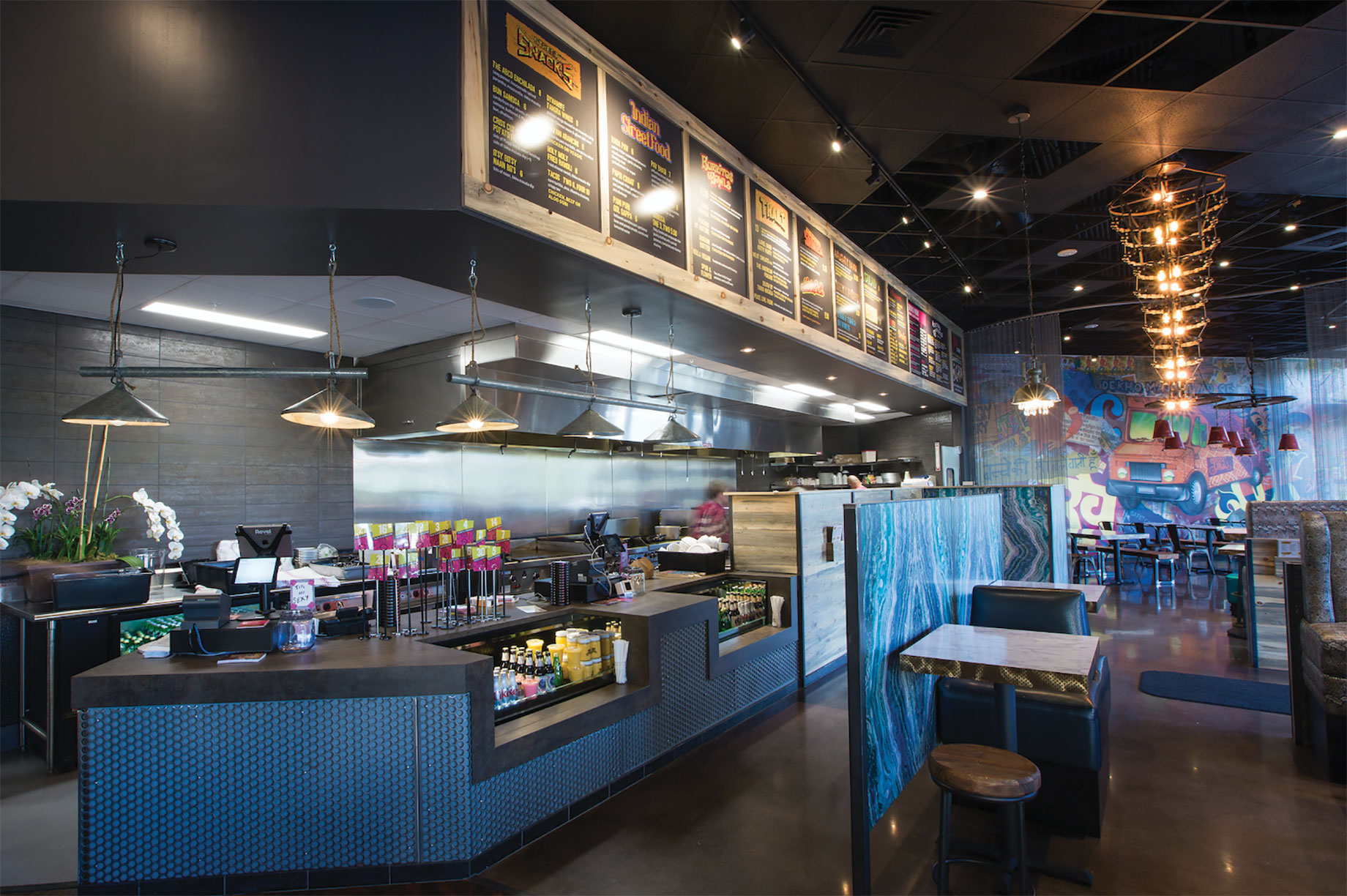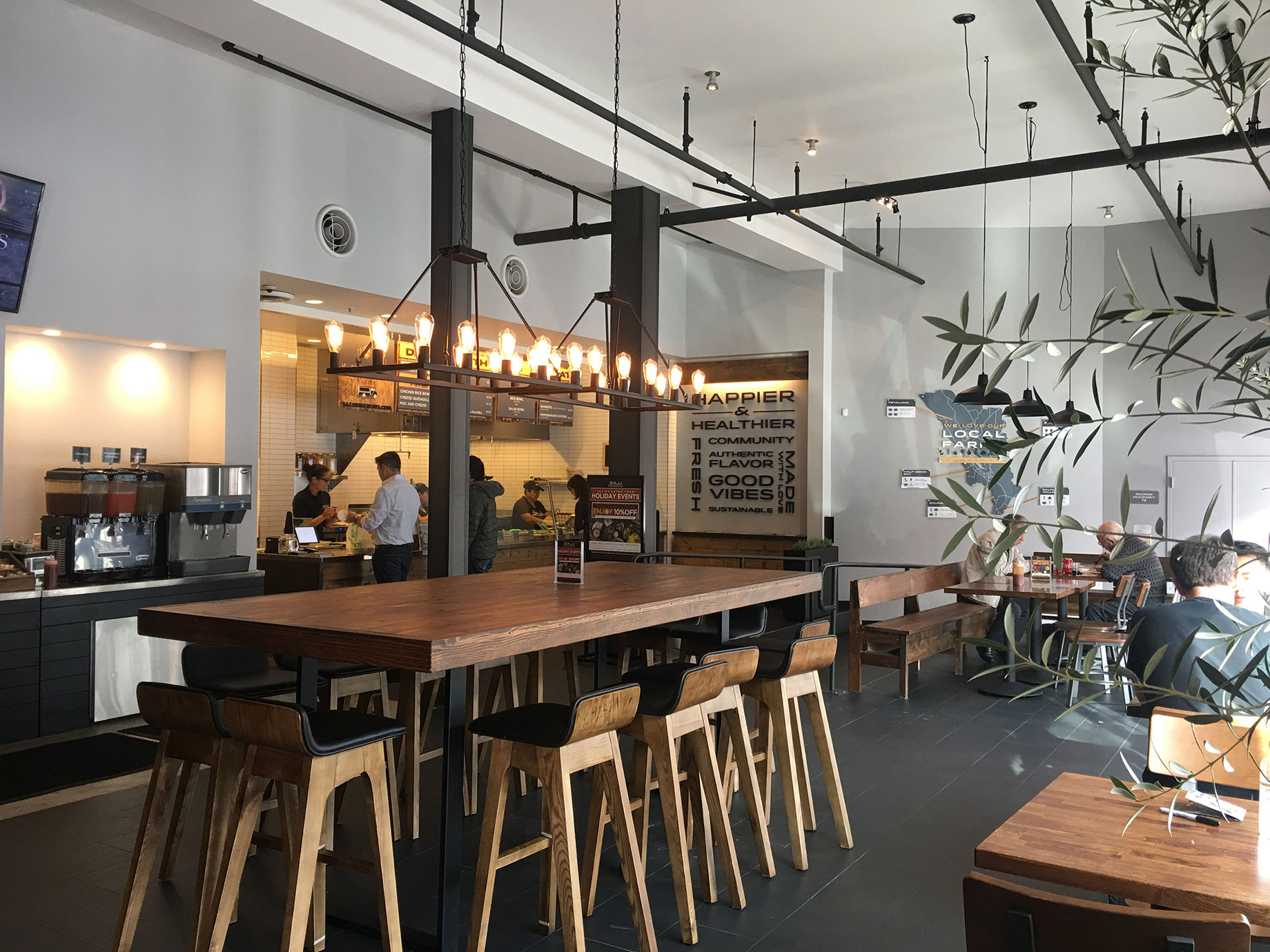A steady expansion of ethnic and international restaurants have put momos (Himalayan dumplings), Hawaiian poke (raw fish) bowls, and wraps on laffa (Mediterranean flatbread) onto U.S. meal plates, thus challenging the entrenched Italian, French and Mexican offerings.
Ethnic foods have become less intimidating and more approachable to consumers, notes Jennifer Watson, senior managing director of Newmark Knight Frank’s national retail group. “Consumer palates are becoming more sophisticated, and there is also more diversity in the country,” she said.
Case in point: The number of Hawaiian poke-bowl restaurants, from chef-inspired fine-dining establishments to fast-casual chains like Pokéworks, has exploded. Pokéworks, founded in 2015, began 2020 with the goal of doubling the number of its corporate and franchise locations to 100 or more by the end of the year.
In the past, immigrants to the U.S. would often open a restaurant to serve their own communities. These establishments would gradually start attracting “adventurous eaters” from outside the community, in search of new tastes, notes James Cook, JLL’s director of research for retail in the Americas. These days, ethnic food concepts have new avenues for reaching consumers: food trucks, street fairs, food halls and even virtual kitchens (see page 36). “The food halls and the food trucks have really allowed for these new foods to spread more quickly than they could have in the past because the barrier to entry for operators [is] lower,” Cook said. Social media and photo posts of delicious-looking food help spur awareness too.

Fast-casual Indian street-food concept Curry Up Now, pictured here in San Jose, Calif., expects to have 20 franchise and corporate locations open across California, Utah and New Jersey by the end of 2020
Growing menu
l Mexican restaurants dominate the U.S. ethnic restaurant sector, with annual revenue approaching $60 billion, while sushi restaurants generate an estimated $21.8 billion of their own, according to research firm IBISWorld. Specialization is growing, though, as restaurant operators attempt to stand out, says David Orkin, a CBRE executive vice president who heads the firm’s Americas restaurant practice. Mediterranean concepts have surged in recent years, as Greek and Italian restaurants are joined by operators focused on such regions as Lebanon and Israel, Orkin notes.
Among the growing Mediterranean chains are Garbanzo, Naf Naf Grill, Roti Modern Mediterranean, SAJJ Mediterranean and The Halal Guys. Some are using mergers and acquisitions to accelerate growth. Privately held fast-casual chain Cave acquired larger rival Zoës Kitchen in 2018. The company continues to operate both brands, which total almost 330 restaurants across 24 states.
Mainstream customers are increasingly accepting Indian food, too. Fast-casual concept Curry Up Now serves Indian street food: dishes like vada pav, which is akin to a mashed-potato-fritter sandwich. The company expects to have 20 franchise and corporate locations open across California, Utah and New Jersey by the end of 2020.
Several other non-U.S. chains are bringing their flavors to the U.S. market, notes Cook. Filipino chain Jollibee — known for fried chicken and dipping sauces, as well as its Jolly spaghetti, a pasta with a sweet sauce — operates nearly 40 stores in the U.S. And South Africa–based Nando’s, which specializes in Portuguese-style peri-peri chicken, operates roughly 1,000 restaurants across 35 countries, including 42 restaurants in the U.S. Kura Revolving Sushi Bar serves sushi from a revolving conveyor-belt delivery system. The Japanese company operates roughly 450 restaurants globally, including about two dozen in the U.S. Another sushi chain to watch is London-based Yo, which acquired Canadian chain Bento Sushi in 2017 for $78 million. Bento Sushi operates nearly 1,000 restaurants in North America.
Minding the stores’ growth strategies
l Ethnic restaurants have plenty of runway ahead. “I think ethnic restaurant growth is going to continue at a rate that is faster than basic restaurants because it is an opportunity for restauranteurs to differentiate themselves from the burger and pizza guys and capture the attention of the consumer,” said Orkin. “They just have to be sensitive about which markets they decide to invest in, to make sure there is enough of the customer for their brand.”
One challenge is frequency of visits per customer. People do not necessarily want to eat Indian barbecue three times a week, or even three times a month, observes Orkin. “To gain acceptance and drive volume, some of the ethnic brands need density and diversity of a marketplace, and you see that more in the population centers on each coast.”
Ethnic restaurants tend to start out in urban centers that can tap into bigger ethnic populations, such as Atlanta, Chicago, Los Angeles, New York and Seattle. Those cities also tend to have a deeper base of foodies, who are more receptive to new foods. Growth does continue elsewhere, however. Korean chain Bibibop Asian Grill opened its first restaurant in Columbus, Ohio, in 2013, and it now operates nearly 40 across eight states.
Orkin cautions against a herd mentality in the restaurant industry when it comes to new trends. Sectors can saturate quickly — consider how popular wood-fired pizza restaurants were a few years ago, he recalls. “It was good until everyone jumped in,” he said. “Then there were too many similar concepts, and the consumer gets a little exhausted with that. Brands that can differentiate themselves and remain relevant
are the ones that tend to succeed.”

Growing chains like Sajj Mediterranean, pictured here in San Mateo, Calif., show that U.S. demand for Mediterranean cuisine is expanding beyond Greek and Italian
By Beth Mattson-Teig
Contributor, Commerce + Communities Today


